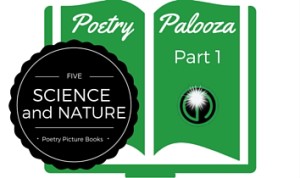 People tend to feel very strongly about poetry, but whether you love it or loathe it, there is no denying that poetry is a powerful genre. Poetry can give voice to feelings that we otherwise might not be able to express. Poets from all cultures and walks of life provide a window into their souls and we realize that we aren’t as different as we thought. Poetry lets us escape from our everyday lives and glimpse a snapshot of another world. If you don’t like poetry, it’s possible you just haven’t found the right poem yet!
People tend to feel very strongly about poetry, but whether you love it or loathe it, there is no denying that poetry is a powerful genre. Poetry can give voice to feelings that we otherwise might not be able to express. Poets from all cultures and walks of life provide a window into their souls and we realize that we aren’t as different as we thought. Poetry lets us escape from our everyday lives and glimpse a snapshot of another world. If you don’t like poetry, it’s possible you just haven’t found the right poem yet!
How do poems grow? They grow out of your life.
~Robert Penn Warren
While, ideally we would read poetry every day, realistically that isn’t practical. So, it is with great joy that we greet this month of April – a whole month devoted to extolling the virtues of the poetic form! The truth is, we can actually teach almost all of our standards with poetry and poetry tends to be accessible to all readers, making it perfect for the classroom. Using a poem, students can learn to be active readers and deploy all the reading strategies, find theme, look for patterns in language, and practice fluency (poems naturally lend themselves to practicing fluency).
Despite it’s accessibility, poetry can be intimidating. But it doesn’t have to be! Throughout this month of April, we want to share with you some of our favorite poetry books (there are SO many good ones!) and some practical strategies for sharing poetry with your class that have been classroom tested and student approved!
For our first post, we want to talk about something that frequently features prominently in poems, but not often in our lives: nature. Our society is typically structured for spending a majority of the work and school day indoors, away from nature. Students and adults alike spend most of their day indoors working. But there is something empowering about being outside and enjoying nature! Many poets have sung the praises of the natural world, so take a nature walk with the students! Make poetry cross-curricular by taking time to stop and observe nature as well as experiencing the words they are reading in a poem. Nature poetry lends itself to sensory language, but that doesn’t mean that’s all you can do with these poems. Science is all about observation, poetry is the same, though the object of observation is words.
This book flips – vertically! Each double page spread has original artwork and a poem about a different type of tree that defies the traditional conventions of a book. (Side note: my tree knowledge has quadrupled since reading this and now I’m infinitely better at playing stop!) While many poems in this book are concrete, they all provide information about a type of tree. Take students out on a nature walk, have them choose something common place and create a concrete poem about their small piece of nature. Don’t forget to share student samples with us in the comments! Check out some of Florian’s other poetry picture books: UnBEElievables and Comet, Stars, the Moon, and Mars.
Who doesn’t love Jane Yolen? You can’t possibly make a list of poetry books without including at least one from Yolen. Though the topic of this one is perhaps a little obscure, it is just beautiful! Each page in this book is a two page spread that contains a stunning photograph taken by Jason Stemple, a small paragraph of information, and an original poem. Each poem illustrates, through words, Yolen’s keen observations and descriptive facts about an egret. I love the mix of photographs, informational text, and poetry. Admittedly, egrets weren’t exactly on my list well-known animals to write about, but Yolen’s presentation of this unique animal provides a model for students to emulate when they write about their own animal. Everyone says to write about what you know, so have students write “A Day in the Life of ___” their own pet, a class pet, or even a family member (if they are petless). They can write a little bit of information discovered through research, write a poem, take a photograph, and create their own book.
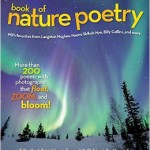 Book of Nature Poetry from National Geographic:
Book of Nature Poetry from National Geographic:
As a child, I remember being mesmerized by photographs from National Geographic, and not much has changed over time. Even as ignorant as I am about photography techniques and what makes a quality photo, I know these are brilliant. This THICK book of poetry not only has the stunning trademark photos from National Geographic, but poems from the greats that will attack the senses: Langston Hughes, Naomi Shihab Nye, Billy Collins, Robert Frost, the list goes on. There are over 200 poems split into categories: The Wonder of Nature, In the Sky, In the Sea, On the Move, Across the Land, In Shade, In Distress, In Season, In Splendor, and Last Thoughts. Science teachers, there is a section for you! There are so many fabulous poems included and it seems that all types of poetry are represented in this collection. These are great poems about which students can make inferences and connections. Choose the poem to read, for example “Tsunami” by JonArno Lawson (p. 123). Have five different informational articles about tsunamis (you can begin your search here). You can even offer fiction selections on tsunamis. Students can make text connections between the poem and the fiction or non fiction selection, and also discuss how the author handled the subject matter, which begins and exploration of tone and mood.
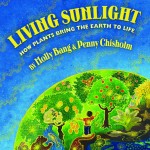 Living Sunlight: How Plants Bring the Earth to Life by Molly Bang & Penny Chisholm:
Living Sunlight: How Plants Bring the Earth to Life by Molly Bang & Penny Chisholm:
I’m calling this a poetry picture book, because the text is lyrical. That being said, it is not “dumbed-down” in the slightest! This entire book is about photosynthesis told by none other than the sun. This book is information dense, but the lyrical flow of the writing makes this information accessible to all ages. Sure, different reading levels will pick up different amounts of information, but that’s one thing that makes this book great! The illustrations are calming as well. There is something about reading difficult information but looking at calming pictures that reduces my stress levels considerably. The pictures don’t necessarily help scientifically, but lend themselves to the beautiful language presented in this book. Once you have read the book with your students, have each student write down one fact they remembered and/or learned from the book. Then do a “walk and stop.” Have students take the fact they wrote down and walk around the classroom to music. When the music stops, each student will face a student they are close to and each will share their fact. When one shares, the other student must repeat the fact back. Then the second student will share their fact and the first student will repeat the fact back. Continue this process a few times. Once they return to their desk, students must write three facts learned in their journal. Check out other books on different topics here.
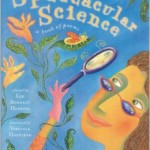 Spectacular Science by Lee Bennett Hopkins:
Spectacular Science by Lee Bennett Hopkins:
Perhaps this is more for the younger grades, but still fun for all. These poems are simple, based on a generic science topic, and whimsical. Young students will love the rhythm and pictures of this book. I think a hidden beauty of this book is that the poems encourage inquiry and thinking. A common theme throughout is that in science it is important to observe, think, question, and generally be aware. I love this idea and goes nicely with trends in education. Use this book to engage students not only in poetry, but the world around them. If you also teach math, check out Marvelous Math as well!
What book would you add to this list?


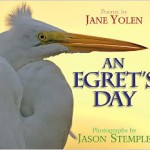





I love all the poetry resources, especially the picture books. I teach kindergarten and Poetry is fun to teach, but finding good poetry picture books can be a challenge for the young learners.
So true! I’m glad you found some good ones to use!
I love the way you made literature and science one subject. It allows us to cross multiple subjects.
I didn’t realize there were so many poetry options for various subjects.
I really enjoy these poetry picture book ideas. We teach poetry throughout the year in first but these would lend well to a few of our science and social studies units. Great for bringing literary connections to science!
I think this is a great way to incorporate other content into Language Arts. I would add Cactus Poems by Frank Asch & Ted Levin.
Thank you for the suggestion Michael, we will be checking that one out!